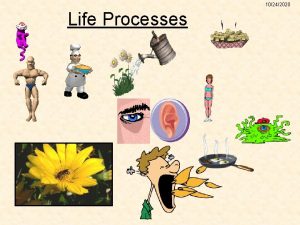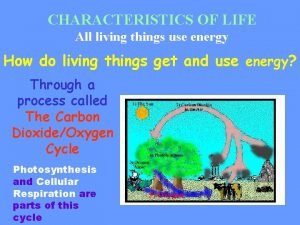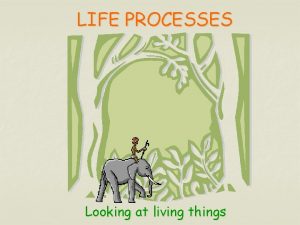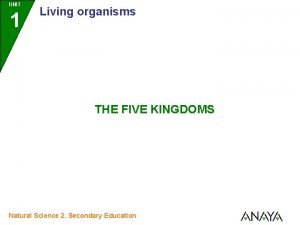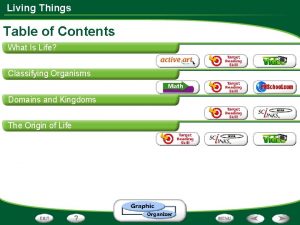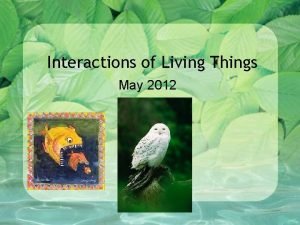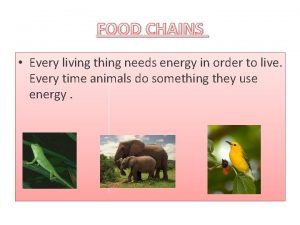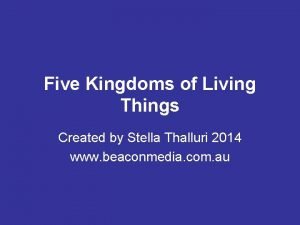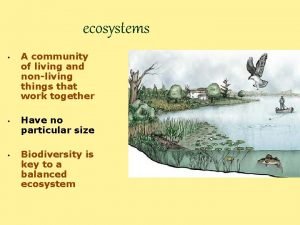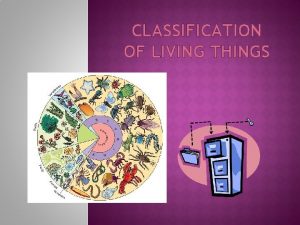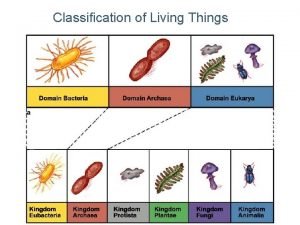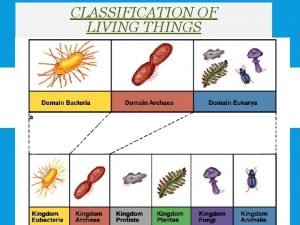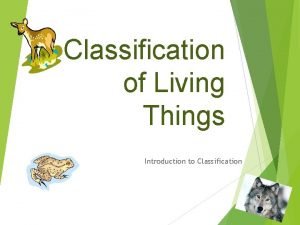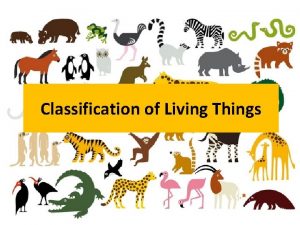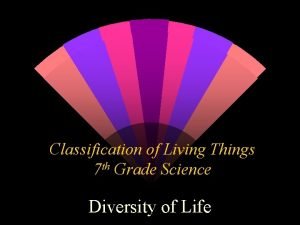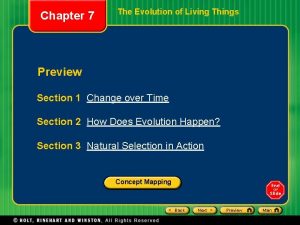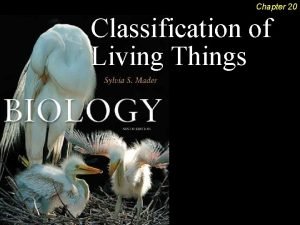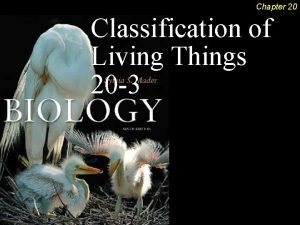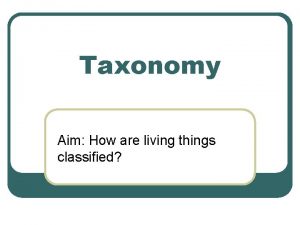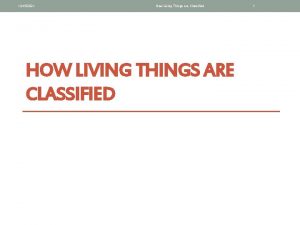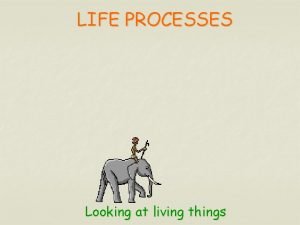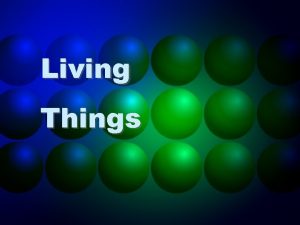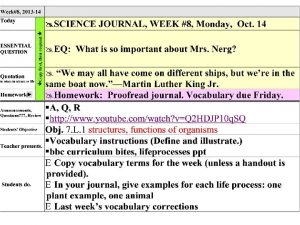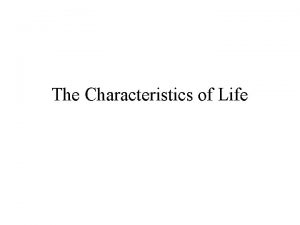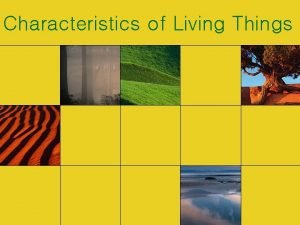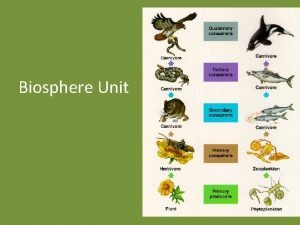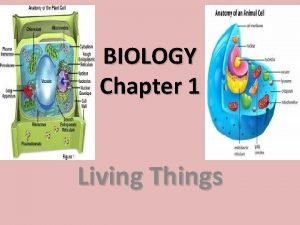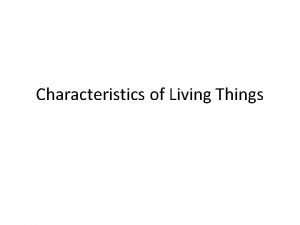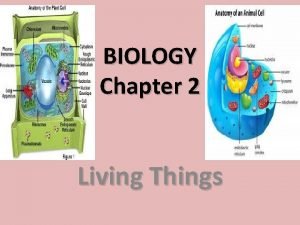Topic Life Aim How are living things classified










































- Slides: 42

Topic: Life Aim: How are living things classified? DO NOW: Reflection; Write several sentences explaining why you would organize your CD collection, clothing or music in your IPod

Shadow Partner ACTIVITY Classify these classroom objects !

The National Science Foundation’s “Tree of Life” project estimates that there could be anywhere from 5 million to 100 million species on the planet, but science has only identified about 2 million.

Topic: Life Aim: How are living things classified? Continued DO NOW: Define classification and explain why it is helpful to a taxonomist?

Classificati on is a method by which biologists group and categorize species of organisms Biological classification is a form of scientific taxonomy

What is taxonomy? Branch of biology that deals with classification of living things

The First Classification Systems Greek philosopher Aristotle, in 4 th century BC, divided living things in 2 groups: Plants and Animals. He also placed animals into 3 groups according to how they moved (ones that flew, swam, walked). Birds and bats were placed into the same group even though they are quite different. This system was used for almost 2000 years. Around the 17 th century scientists started to classify organisms in a more meaningful way (form and structure).

classification is based on the work of Carolus Linnaeus, who grouped species according to shared physical characteristics

Inquiring minds want to Know Think about an elephant. Develop a mental image of it. How would you describe it to someone who has never seen one? Take a moment to consider carefully. . . Not surprisingly, biologists also classify organisms into different categories mostly by judging degrees of apparent similarity and difference that they can see. The assumption is that the greater the degree of physical similarity, the closer the biological relationship.

Characteristics Used for Classification 1. ANATOMY Similarities in structure

2. BIOCHEMISTRY 3. EMBRYOLOGICAL DEVELOPMENT Similarities in genetic makeup (similar proteins, similar DNA) Similarities in the stages of development of embryos


Topic: Life Aim: How do scientists identify and create scientific names for an organism? DO NOW: • How and why do taxonomist use classification systems? • How do scientist classify living things? • Identify the characteristics observed to classify these organisms.

Seven Levels of Classification Kingdom Phylum Class Order Family Genus Species

Largest Kingdom groups Phylum Class Order Family Smallest groups Genus and most closely related to each Species other

How can I remember this? • • Kingdom Phylum Class Order Family Genus Species = = = KING = PHILLIP CAME OVER FROM GERMANY = SKIPPING

Kings Play Chess On Fine Green Stools

What is a species? One kind of organism that can mate with each other and produce fertile offspring

Naming Organisms Carolus Linnaeus (1700’s) Devised system of binomial nomenclature

Naming organisms Before Linnaeus developed his naming system, plants and animals were named by a series of Latin words that described the physical appearance of the organism. This was very confusing. For example, let’s look at the first name of the honey bee. Apis pubescens, thorace subgriseo, abdomine fusco, pedibus posticis glabris utrinque margine ciliatus. This means “fuzzy bee, light gray middle, brown body, smooth hind legs that have a small bag edged with tiny hairs. ” Linnaeus named it Apis mellifera which means “honey-bearing bee. ”

How do scientist use characteristics to name an unknown organism?

Binomial nomenclature Two-word system of identifying organisms Genus species First and upper case Group of similar species Second and lower case Describes characteristi c of species

Binomial nomenclature Examples Genus specific epithet Homo sapiens * Sapiens means “wise”


More examples Canis rufus Canis latrans Red wolf Gray wolf They are of a different species but can mate

Canis lupus Procyon lotor Drosophila melanogaster

Summary Which scientist Is correctly paired with his contribution to biological science? 1. Miller – first to observe mitotic cell division. 2. Linnaeus – devised a binomial system for naming organisms 3. Hooke – saw the first living cell in pond water 4. Watson – first observed cells

Dichotomous key • is a tool that scientists can use to help identify a particular specimen • the term dichotomous begins with the prefix of "di" which means two • allows for the scientist to ask a series of questions with yes or no answers

Rules to Follow When Using a Dichotomous Key 1. Always read both choices, even if the first seems to be the logical one. 2. Understand the meaning of the terms involved in the key. 3. When measurements are given, use a scale to measure the specimen. Do not guess at a measurement.

Some Key Ideas in Dichotomous Key Construction 1. Use constant characteristics rather than ones that disappear or vary with the season or other environmental factor. 2. Use characteristics which can be directly observed. 3. Use quantitative measurements with an amount or dimension rather than vague terms like "big" and "small. "

Organisms are distinguished on the basis of cellular organization and methods of nutrition. Whether they are single- or multiple-celled and whether they absorb, ingest, or produce food

King Paul Came Over For Good Soup

What is a kingdom? Largest classification group 5 kingdoms, Very diverse


Fungi Plant Monera Kingdoms Protist Animal

Multicellular Heterotrophic NO cell walls or chloroplasts 1, 000 species Examples: sponges, worms, insects, fish, amphibians, reptiles, birds, and mammals

Multicellular Autotrophic Contains cell walls and chloroplasts 250, 000 species Examples: pine trees, grass, sunflower, shrubs, maple tree

Multicellular or Unicellular Heterotrophic: digest dead Organic matter Cells have cell wall, but NO chloroplasts 100, 000 species Examples: mold, yeast, mushrooms

Unicellular Some are autotrophic Some are heterotrophic Prokaryotic (no nucleus) 10, 000 species Examples: bacteria and bluegreen algae

Unicellular but some are multi-cellular Some are autotrophic Some are heterotrophic Eukaryotic (have nucleus) 250, 000 species Examples: ameba, paramecium, algae

Shadow partner activity Identify the following organisms as PLANTS ANIMALS PROTIST MONERAN FUNGI

Topic: Life Aim: How do scientists identify unknown specimens? Do Now: List a few ideas that may answer the aim
 Antigentest åre
Antigentest åre Venn diagram of living and non living things
Venn diagram of living and non living things The smallest living unit within the human body is
The smallest living unit within the human body is Seven life processes grade 4
Seven life processes grade 4 Seven life processes
Seven life processes Life cycle of all living things
Life cycle of all living things The seven life processes of living things
The seven life processes of living things Unity and coherence
Unity and coherence Narrow down the topic
Narrow down the topic Yeast is living or nonliving
Yeast is living or nonliving Living non living dead
Living non living dead Half life aim
Half life aim Why is water important to living things
Why is water important to living things Live n living
Live n living 5 kingdoms of living things
5 kingdoms of living things Life's structure and classification answers key
Life's structure and classification answers key Living things meaning
Living things meaning Ecosystem living and nonliving things
Ecosystem living and nonliving things Cho cho chon chonp
Cho cho chon chonp Domain of living things
Domain of living things Linnaeus
Linnaeus Six kingdom
Six kingdom Living things 20
Living things 20 Food chain begins with
Food chain begins with Food chains are interconnecting food webs.
Food chains are interconnecting food webs. Five kingdoms of life
Five kingdoms of life What is a community of living and nonliving things
What is a community of living and nonliving things Gets its energy from eating living things
Gets its energy from eating living things Kingdom archaea
Kingdom archaea Domain of living things
Domain of living things 8 levels of classification in order
8 levels of classification in order Horse dichotomous key
Horse dichotomous key Genus and species difference
Genus and species difference 5 groups of living things
5 groups of living things Domain of living things
Domain of living things What are the 7 classifications of living things
What are the 7 classifications of living things Thampi torrent frog
Thampi torrent frog How living things are organized
How living things are organized Living things meaning
Living things meaning Chapter 7 the evolution of living things answers
Chapter 7 the evolution of living things answers Categories of living things
Categories of living things Living things 20
Living things 20 Kingdom phylum class order
Kingdom phylum class order




